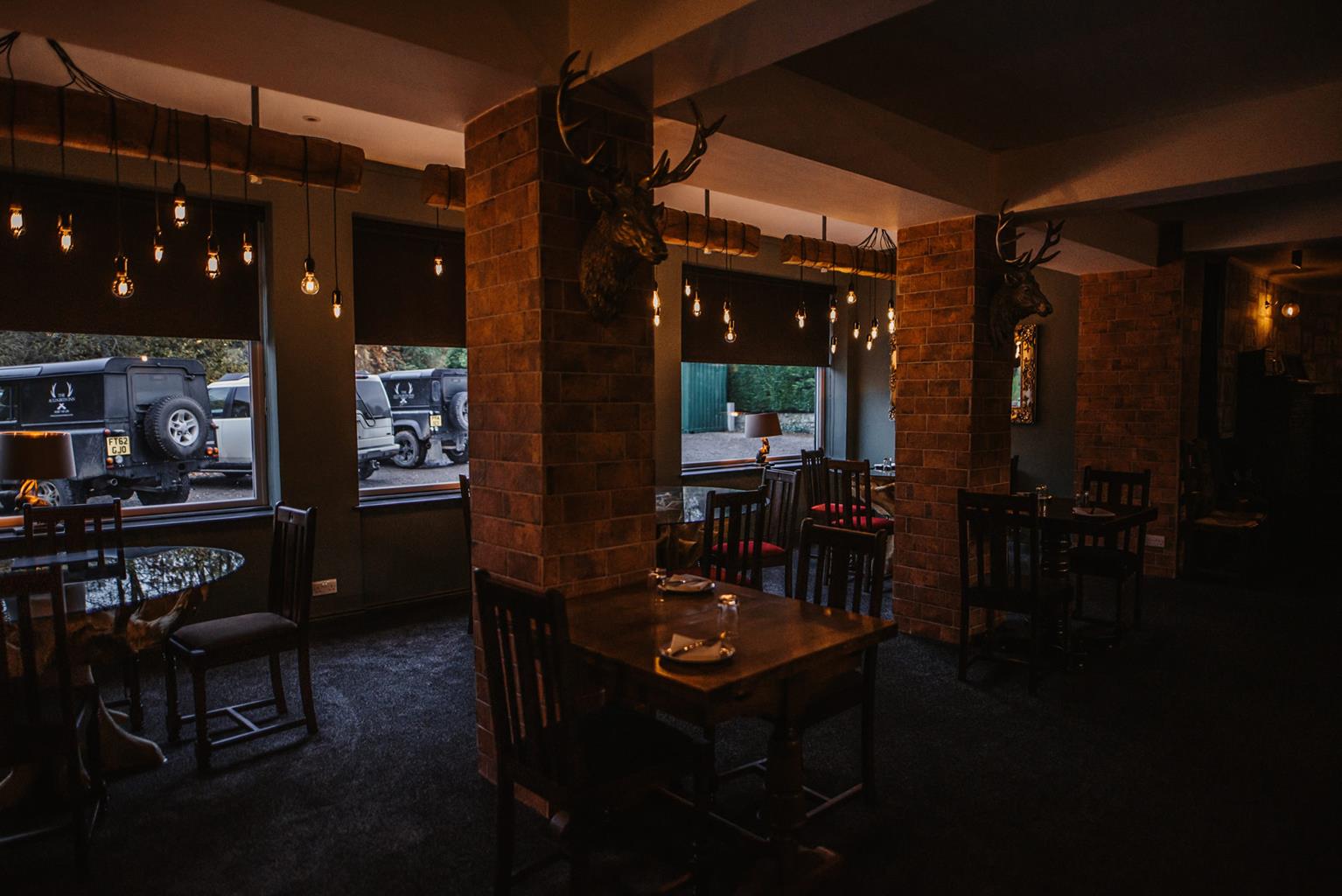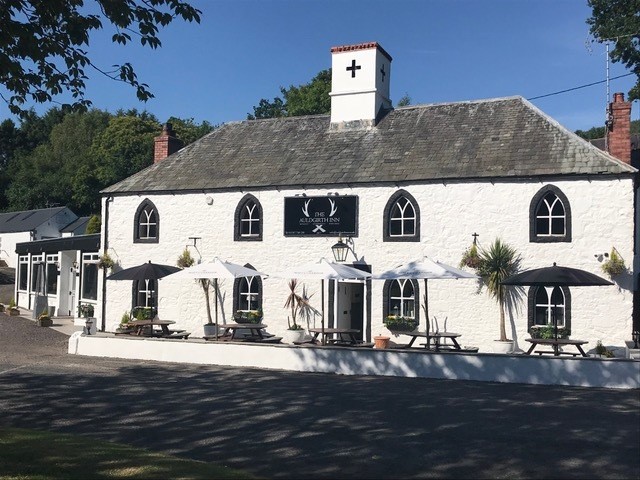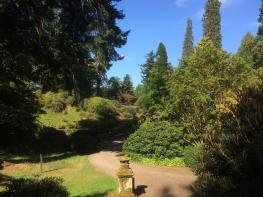A delightfully maturing family park, surrounded by the Southern Uplands and handily located…
Leadhills Miners’ Reading Society

In the footsteps of some very literate gold and lead miners
3.5 miles (5.7kms)
About the walk
Leadhills is Scotland’s second highest village after nearby Wanlockhead and exists for the same reason. Rich deposits of minerals made the area attractive to prospectors. Gold was once found in abundance here and was used to create the Scottish Crown, the oldest royal crown in Europe. But it was the substantial lead deposits that led to the opening of the many mines that led to the creation of villages to house the miners.
Like Scottish weavers they had a thirst for knowledge and in 1741, 23 of the villagers founded the Leadhills Miners Reading Society, making it the oldest subscription library in the UK. It would be a further 17 years before the first one in England opened in Liverpool. With the exception of the local minister and schoolmaster all of the other founders were miners. It was not cheap to join but the miners stumped up the three shillings (15p) entrance fee and an annual subscription of two shillings (10p). That was a lot of money considering their annual income was around £20.
By 1821 there were 1,500 books, including novels by Carlyle, Ruskin, Scott and Swift in addition to a considerable collection of religious and historical texts. By 1904 this had risen to 3,805 volumes, all listed in a printed ‘Catalogue of Books in Leadhills Library’. Temperance books also appeared to be popular, including one with the title ‘ The Truth about Drink’. John Hope, who was a famous Victorian temperance campaigner, launched his onslaught against the ‘demon drink’ in Leadhills.
The success of Leadhills Miners Reading Society led to the formation of similar societies in nearby Wanlockhead in 1756 and Westerkirk Library near Langholm in 1792. With the closure of the leadmines in the 1930s the service was in trouble and in 1940 the local council took it over and ran it on a part-time basis. It was replaced by a mobile library in the 1960s and the building was closed, but the local residents formed a committee to preserve it and in 1972 it was re-opened. Now it contains relics of the village's history as well as the book collection, maps, photographs and geological specimens. It is open at the weekends May–September and at other times by appointment.
Walk directions
Exit the car park, cross the street and turn right. At the end of a white cottage turn left onto a footpath then follow it to go down some steps onto a road. Cross the road and head uphill on Gowanbank to reach the village cemetery.
Go through the entrance gate into the cemetery, turn right and follow the perimeter wall. Keep following it when it turns left until you reach the grave of John Taylor. Retrace your steps to the gate then follow the outside of the perimeter wall to visit the Symington Memorial. This commemorates William Symington, the inventor of steam navigation, who was born in Leadhills.
Continue from here on a footpath heading away from the cemetery. This heads downhill to intersect with a lane beside some cottages. Turn left onto the lane and head towards a gate. Before you reach that, turn right onto an obvious grassy path and follow it until it reaches a rough road beside the main road.
Turn left onto the rough road and follow it, passing the waterworks and going through two gates to eventually reach a third gate beside some spoil heaps. Go through the gate, turn right and follow the line of the fence to go through another gate.
Strike off uphill through the moorland at a 45-degree angle. Tracks are virtually non-existent here and the going can be a bit tough in the summer months but trudge on to reach a prominent cut in the hillside. Drop down into this, turn left and head uphill until the cut intersects an estate track.
Turn left onto the road, which curves right and uphill. On your right look out for a disused shaft and beyond it an old mine. At a fork in the road go left, then through a gate and head downhill. Go through the next gate and shortly afterwards the road turns sharply left and another road branches of to the right. Keep left to reach the B797.
Cross the road and continue past the remains of some sheep pens to reach a rough track. Turn left onto this and follow it into Leadhills village, passing a terrace of two houses, then a short row of cottages, before the track terminates at a junction with a narrow road.
Turn left onto Station Road and head downhill towards Leadhills Church. At the junction with the Main Street, turn right and walk back through the village, passing the Hopetoun Arms Hotel and the Village Store. Finally reach the Leadhills Miners Library and immediately next door to it Leadhills School and the public car park.
The path at this point is little more than a series of sheep tracks and may disappear altogether, but that is not a problem. Ahead of you is a large conical spoil heap and, provided you keep heading towards it, you know you will be going in the right direction.
Towards the end of the hill the track heads left, starts to make its way downhill, then passes behind a row of cottages. Veer right, downhill, after the cottages to join the road. Turn left and continue past Glencrieff cottages, then turn right, leaving the road and heading downhill again. Cross a bridge and climb up on to the Southern Upland Way. Turn left along it and follow this back to the car park.
Additional information
Footpaths, estate tracks and open hillside
Hillsand village
Good walk for dogs but keep on lead near livestock
OS Explorer 329 Lowther Hills, Sanquhar & LeadhillS
Public car park in village next to school
In car park at start of walk
WALKING IN SAFETY
Read our tips to look after yourself and the environment when following this walk.
Find out more
Also in the area
About the area
Discover South Lanarkshire
South Lanarkshire offers some of Scotland’s best days out, with country parks, museums, activity centres, historic sites and walking trails to choose from.
Many of the area’s museums are a window into the county’s industrial heritage, the biggest claim to fame being New Lanark. Glasgow philanthropist David Dale first developed a cotton manufacturing plant and settlement at New Lanark in 1786, harnessing the power of the River Clyde as it roars over spectacular waterfalls. His son-in-law Robert Owen purchased the village in 1799. A pioneer of social reform, over the next two decades he established a Utopian society here – a model community with improved conditions for the workers and their families, complete with a school (with the first day nursery and playground in the world, it’s claimed), institute for adult education and co-operative village store. The site has been restored and added to UNESCO’s list of World Heritage Sites for visitors to learn about its history.
You should certainly muster your remaining energy for the walk upstream to the three waterfalls known as the Falls of Clyde. The deep gorge was inaccessible before David Dale saw the potential of the area, and the natural power that the water could provide.
Nearby stays
Restaurants and Pubs
Nearby experiences
Recommended things to do
Why choose Rated Trips?
Your trusted guide to rated places across the UK
The best coverage
Discover more than 15,000 professionally rated places to stay, eat and visit from across the UK and Ireland.
Quality assured
Choose a place to stay safe in the knowledge that it has been expertly assessed by trained assessors.
Plan your next trip
Search by location or the type of place you're visiting to find your next ideal holiday experience.
Travel inspiration
Read our articles, city guides and recommended things to do for inspiration. We're here to help you explore the UK.













